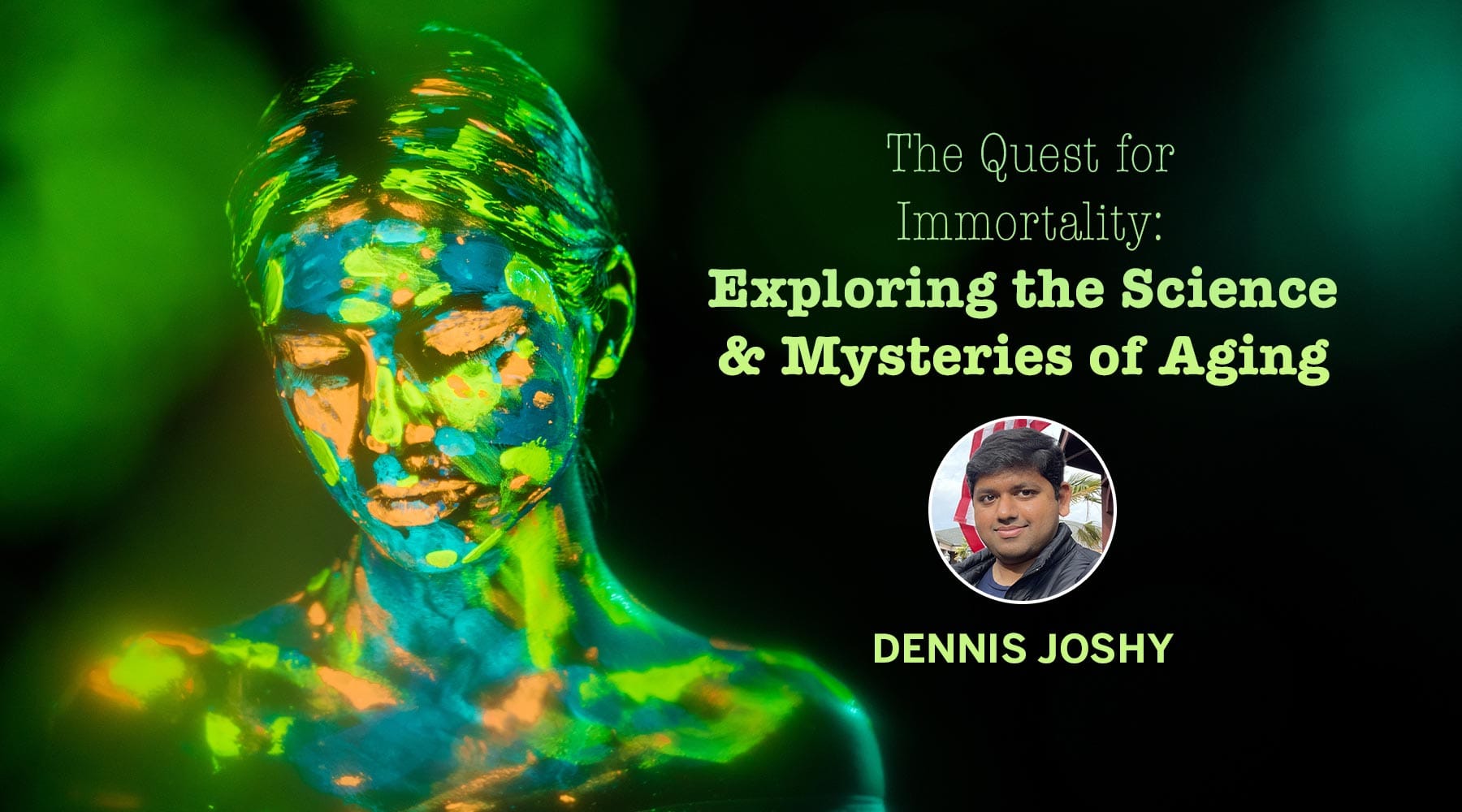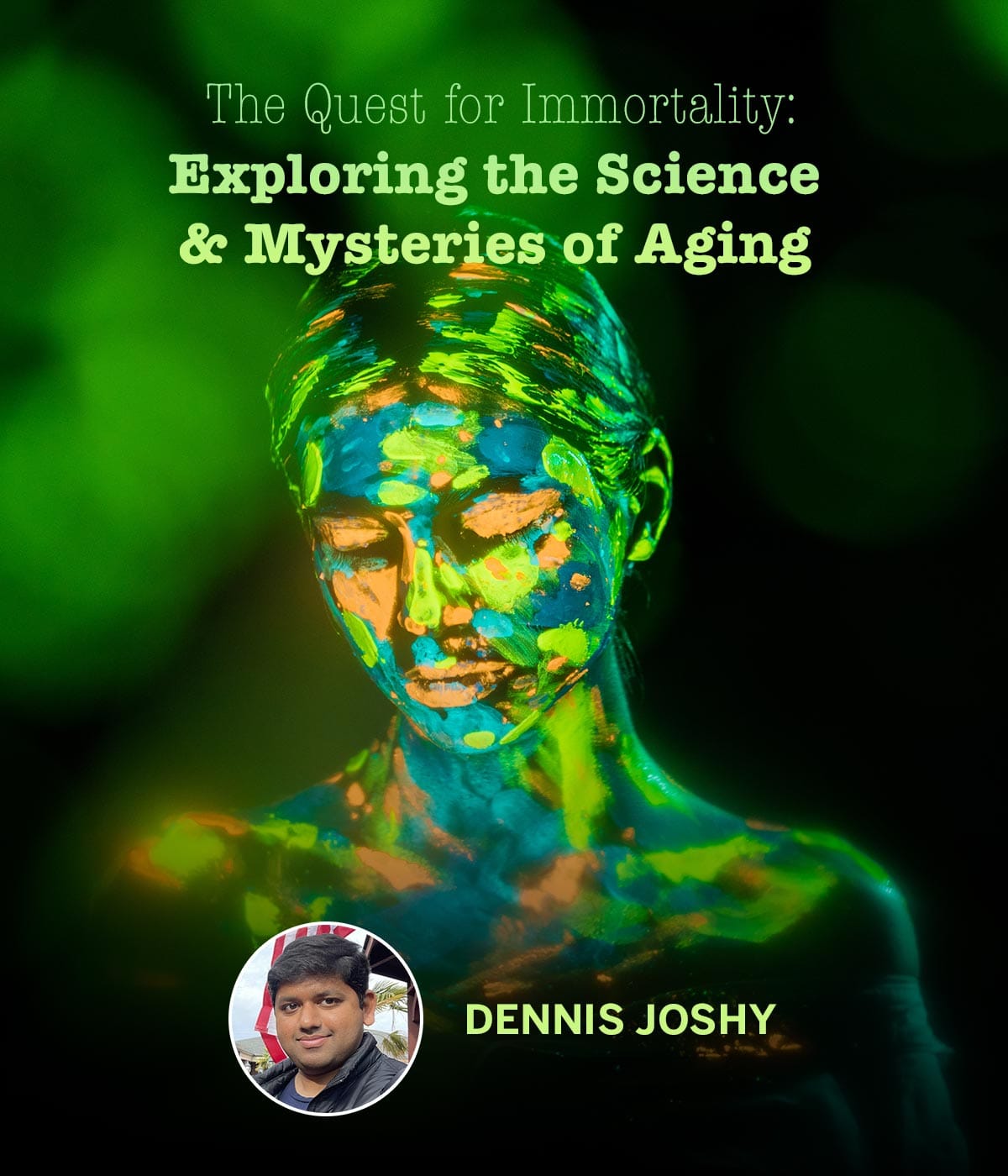There are rare cases in nature of biological immortality. The jellyfish Turritposis Dohrnii is considered biologically immortal because of its ability to revert from the adult Madusa stage back to the polyp stage via a process called transdifferentiation. Clonal immortality, as exhibited by the quaking aspen, tree is another intriguing case in which a single organism can achieve extraordinary life spans via regeneration through its root systems. Pando, a clone of the quaking aspen, is a remarkable example of this with root systems estimated to be over 10,000 years of age. Many organisms are also capable of fully regenerating limbs, organs, and other parts of their body when needed. My favorite example is that of Botryllus Schlosseri which also demonstrates a case of clonal immortality by regenerating entire zooids from just fragments of itself. While not strictly a scenario of biological immortality, the developmental programs underlying such abilities motivate significant scientific effort into finding evidence for the programmability of aging using external and genetic means.
While historically aging has been a hotly studied topic in academia, recent interest has attracted several industrial initiatives. Dr. Cynthia Kenyon was able to isolate the Daf-2 mutation that allowed adult Nematodes to live up to twice as long as their wild counterparts. She recently gave a lecture at UC, Santa Barbara for the Center for Aging and Longevity research about how her current work is pushing the envelope forward in longevity at Calico Lifesciences – a subsidiary of Alphabet founded by Google in 2013. Calico is committed to understanding and possibly slowing down human aging and developing drugs by leveraging systems biology, data driven techniques and various other approaches. There are also other important players in this domain such as Unity Biotechnology, Insilico Medicine and BioAge labs just to name a few and are part of a growing ecosystem of longevity focused companies. Longevity Global is a non-profit community of scientists, investors, and entrepreneurs who came together to foster community and collaboration which is further reflective of the increased interest in longevity across the board.
Aging can be explored through various perspectives two modes of investigation are through the lens of molecular and evolutionary biology. Some of the reasons behind aging include epigenetic changes. These are changes that occur above the genetic level or not strictly by the genetic code itself. It involves certain molecular markings like methyl groups and the shape in which DNA is stored. These markings influence how and when genes are expressed. As people age, these epigenetic factors can change and influence which biochemical pathways are expressed. Another prominent theory of aging involves the activity of free radicals or Reactive Oxygen Species (ROS). Free radicals tend to attack vital parts of the cell and the accumulation of damage caused by them can contribute to aging. There are many other hypotheses such as telomere shortening and mitochondrial dysfunction that could contribute to aging.
While these hypotheses explain the mechanism behind aging it is interesting to wonder why some forms of life are capable of excellent regeneration and in some rare cases reversion of age, while many others are not. If aging is detrimental at the individual level, why has evolution allowed it to persist in such a holistic fashion impacting the species as a whole? Evolutionary biologists have attempted to explain this via multiple hypotheses such as the Madewar theory of aging also known as the Mutation Accumulation Theory. This theory posits that the force of natural selection declines with age. This means that genetic programs and mutations that contribute to aging are not selected out because they do not impact the individual’s ability to reproduce earlier in life. Instead, natural selection can only operate on the transmitted genetic information and these mutations are not subject to it.
Another explanation is the antagonistic pleiotropy theory of aging by George C Williams, which posits that genetic programs that are responsible for aging are also beneficial earlier in life. They serve dual purposes over time and natural selection performs an evolutionary trade-off to keep genes that confer early life fitness. An example of this is the Insulin-like Growth Factor (IGF-1) that promotes growth and reproduction but can also increase the risk of cancer. The disposable soma theory proposes that somatic cells/non germline cells are not under high selective pressure as they only play a role in supporting reproduction unlike germline cells which are actively involved in passing on genetic information.
With greater resolution in molecular profiling, there is further evidence that different cell types age at different rates. This might not be very surprising as depending on function, cells operate at different metabolic and stress levels. A recent study was able to expose this in detail considering both gene expression and the chromatin landscape at the individual level from gestation till adulthood. The epigenetic clock is a novel concept to explain aging by considering the biology of the individual and can be more informative in conversations of aging rather than using the chronological age. It is an exciting time to study aging with vast unprecedented efforts both from academia and industry. It will require further concerted efforts from researchers, engineers, investors, and policy makers to understand aging better and improve well-being and quality of life.
References
https://www.youtube.com/watch?v=9nXop2lLDa4&ab_channel=TalksatGoogle
Kenyon, Cynthia, et al. “A C. elegans mutant that lives twice as long as wild type.” Nature 366.6454 (1993): 461-464.
Pal, Sangita, and Jessica K. Tyler. “Epigenetics and aging.” Science advances 2.7 (2016): e1600584.
Liochev, Stefan I. “Reactive oxygen species and the free radical theory of aging.” Free radical biology and medicine 60 (2013): 1-4.
Herring, Charles A., et al. “Human prefrontal cortex gene regulatory dynamics from gestation to adulthood at single-cell resolution.” Cell 185.23 (2022): 4428-4447.




